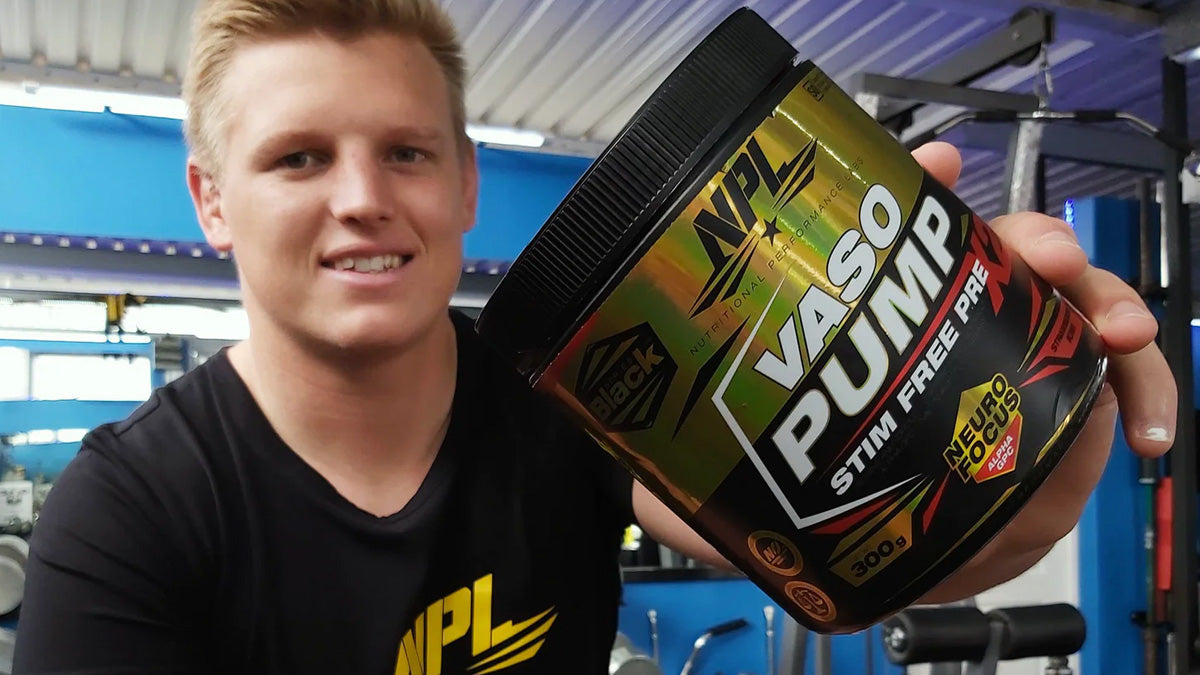Pre-Workout, Stimulant Or Non-Stimulant? That Is The Question!
In fitness, pre-workouts are a useful and efficient way to boost energy levels and performance in the gym. Pre-workouts come in a variety of forms, and all accomplish different things with some offering an immediate burst of energy that slowly fades while others offer prolonged energy but at the cost of not being as potent.
So how do we differentiate between pre-workouts and what does this distinction mean for gym-goers who are looking for a pre-workout? First we need to understand there are two main categories of pre-workout: stimulant and stimulant free/non-stimulant. Then what is a stimulant? And how does this affect your choice of pre-workout?
What does it mean for a substance to be a stimulant or non-stimulant?
A stimulant is defined as a class of substances that affects the nervous system of the body and affects neuroreceptors and neurotransmitters. A common example of a stimulant used in pre-workouts is caffeine, which affects the neuroreceptors for adenosine in the brain. When adenosine binds to it’s receptors it slows neural activity and makes you feel sleepy and fatigued. Caffeine blocks adenosine from reaching its receptors and as a result stimulants the neural activity and provides a boost of energy for several hours after consumption. So broadly, stimulants are substances that stimulate your body and brain and enhance mood, energy and focus.
Non-stimulants are, well, the exact opposite, where the substance rather than stimulating the nervous system acts directly on muscles and substances that cause fatigue. Beta-alanine is a popular non-stimulant that is responsible for producing a certain protein that helps fight fatigue in the muscles. The nervous system has not been stimulated instead beta-alanine works to directly fight the cause of fatigue and assist in recovery. So, now that we know how exactly stimulant and non-stimulant substances work, we can explore why some pre-workouts have stimulants and why some don’t.
Do I need a stim pre-workout or a non-stim? And how do I know which pre-workout to use?
The main difference between stim and non-stim is that non-stim relies on ingredients to improve performance that don't act on the brain and central nervous system. No one is better than the other, non-stimulants work just as effectively as stimulants. Instead when choosing a pre-workout the main focus should be what do I need this pre-workout to do? With stimulants they should be avoided close to bedtime as stimulants will affect your sleep if taken later in the evening, other than this there is no reason you should not use a stimulant over non-stim aside from medical reasons.
Stimulants generally have a bigger energy kick early on, which means if you are performing a short explosive set with medium to heavy weights then you should use a pre-workout that contains a stimulant. This is not to say stimulants can’t have extended energy release, our N.O Charge offers prolonged energy through a combination or stim and non-stim ingredients.
Non-stimulant pre-workouts will often offer a more prolonged energy release, if you are going to be exercising for close to two hours then a non-stimulant will work better since there will also not be a “crash”. Vaso Pump is a great non-stim pre-workout that offers extended energy release but does not have the same kick you would receive from a stimulant. One advantage of a non-stimulant is there is no crash. A crash is when the stimulant has started to work itself out of your system and is generally followed by a sudden drop in energy or focus and feeling tired and fatigued. Coffee drinkers will experience this roughly 5 hours after consuming caffeine, when the caffeine begins to work out of our systems it makes us feel sleepy and tired because now the adenosine can bond to its receptors which it was not able to do before.
So, what do I use?
For short intense sessions before 16:00 in the afternoon, a stimulant will offer more benefits than a non-stimulant. For longer less intense sessions that are not as physically demanding, a non-stimulant will offer more support. This doesn’t mean you always need to use a pre-made pre-workout, instead you can make your own and include ingredients that offer the necessary benefits you need. So how do you make your own pre-workout? By using the below:
- Citrulline Malate
- Beta-Alanine
- BCAA 5000 2:1:1
- BCAA EAA 12:1:1
- L-Leucine
- L-Glutamine
Blog Provided by NPL

